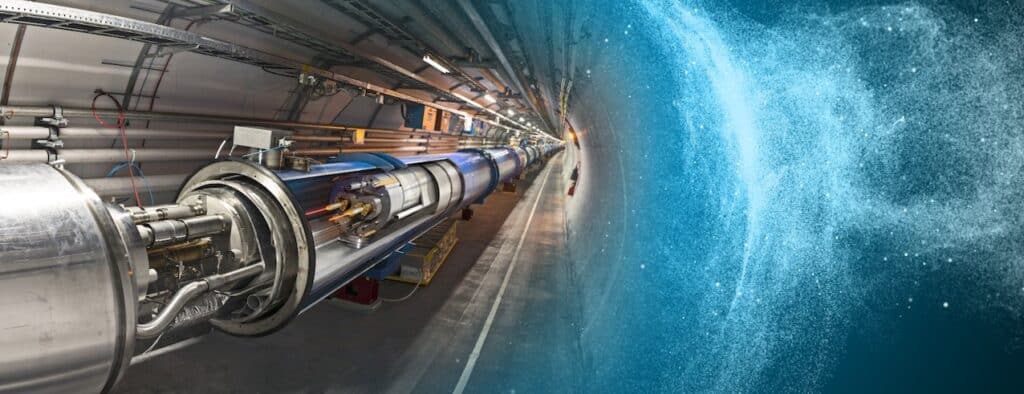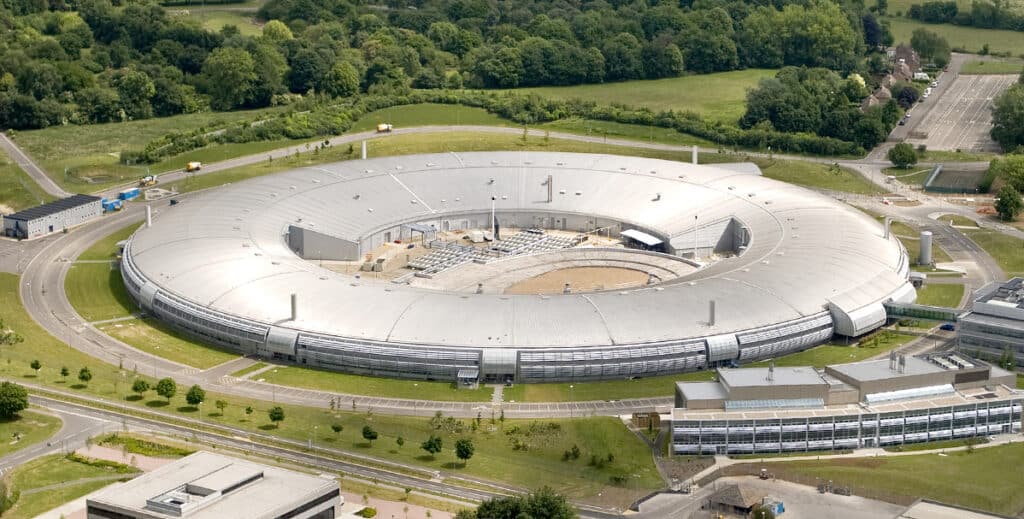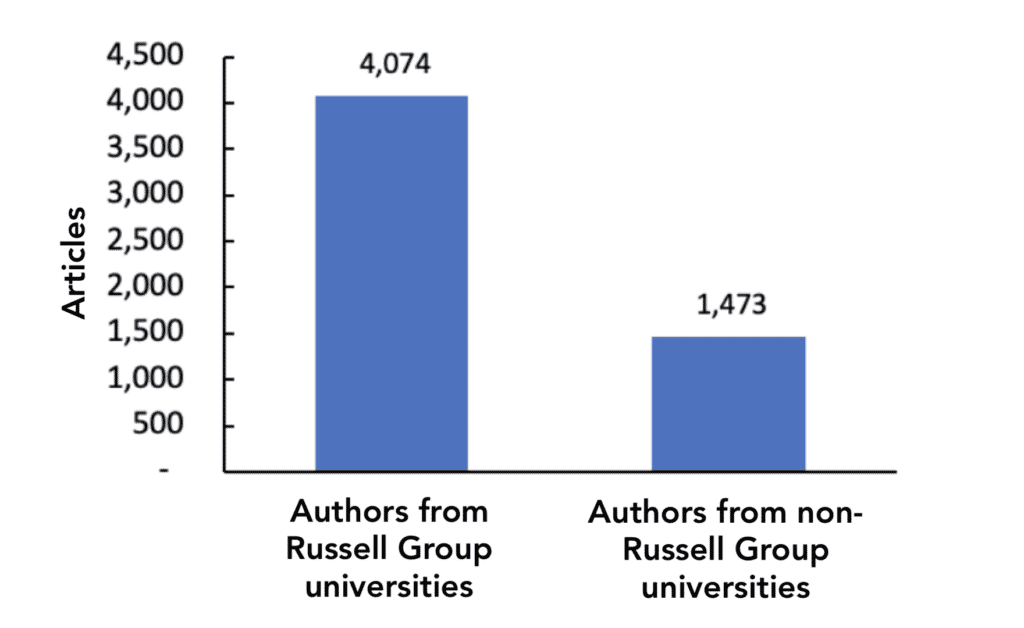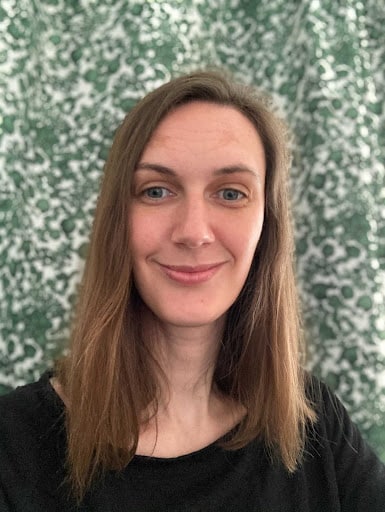Subscribe to our newsletter
How can central research facilities expand their role in the science community?
Governments and research consortia can reap great benefits for the community and industry through large, shared research facilities and infrastructure.
What happens when experiments are too big and too expensive for a single university to run?
Some research efforts need to be conducted at a huge scale, drawing on multiple partner institutions; it’s not always feasible or advisable for one institution to be the sole focus of that work. Instead, large scientific instruments and experimental infrastructure are built and maintained at central facilities.
These advanced research tools range from underground labs at the bottom of mines, to free-electron lasers and particle accelerators – such as the Large Hadron Collider at CERN, Switzerland.

Due to their scale and cost, these facilities tend to be built and managed by government agencies or public research funders and made available to the national or international research communities. Such research facilities represent a major, long-term investment in a region’s research and innovation capability – from initial conception, to designing, building, maintaining, and upgrading facilities and their equipment, the commitment required from governments and their agencies can span decades of public expenditure.
For example, by the time Diamond – the UK’s national synchrotron light source – started accelerating electrons, it was one of the British Government’s largest capital expenditures on research and development in 40 years, costing £260 million (more than US $300 million in today’s currency). From the time of the initial report in the 1990s recommending its construction to the date of its first user beam in 2007, the synchrotron had taken 14 years to come to fruition.

Why do governments and funders invest so much in central research facilities?
The discoveries made at central facilities would be impossible elsewhere. Experiments at such facilities employ highly specialised technical equipment and foster collaboration between leading experts, attracting national and international scientific talent. This combination of technical excellence with scientific expertise leads to novel results, the creation of new knowledge and innovation, and pushes the frontiers of many research fields. From an academic standpoint, it ensures high-impact publications and insights that can have a ripple effect through science and education for decades to come. For governments, industry and the community, such discoveries can lead to great economic and social outcomes.
How do researchers get to run experiments at central facilities?
Many facilities operate a user program; the “users” are often researchers based at universities or government agencies, visiting the facility for a few days or weeks to perform experiments that further their research. While at the facility they work with a second group of researchers and technical crew, employed by the facility to run the scientific instruments. The users and inhouse researchers collaborate to run experiments and publish the results from experiments as co-authors.
How can Dimensions be used to evaluate user facilities?
Dimensions is the world’s largest database of research information, including individual researchers and their institutions, their research grants, publications, datasets, patents – even clinical trials as a linked dataset. Using Dimensions, it’s possible to delve into the connections between researchers, including those working at central research facilities.
Here we explore the collaboration patterns of users and in-house researchers at ISIS Neutron and Muon Source in the UK. At ISIS, beams of neutrons or muons are used to study materials at the atomic scale – from cracks in wind turbine blades to the structures of viruses and the inner workings of lithium batteries.
We’ve made this example a bit harder for ourselves because ISIS is not currently indexed in Dimensions as a research organisation; instead, inhouse scientists are shown to be affiliated to the Rutherford Appleton Laboratory (RAL) where ISIS is based. Therefore, to find articles that include experimental results from ISIS, we can devise a search string within Dimensions that returns articles mentioning ISIS in the full text. This search string will, for example, look into each article’s methods sections, in which co-authors will indicate that data was collected at ISIS. Sounds complex? Not really, because the information available to Dimensions is so deep that we’re able to conduct this search with relative ease.
Who gets to use these facilities, and how can Dimensions help?
Comparative analyses are always useful. Here (Figure 1) we’ve conducted an analysis that compares the use of ISIS Neutron and Muon Source by researchers at the 24 leading Russell Group universities (effectively the UK’s “Ivy League”) with all other non-Russell Group universities. We can see which institution’s researchers get to use ISIS by comparing the number of articles that mention that facility.

We see that Russell Group researchers are nearly three times more likely to be co-authors on publications mentioning ISIS than a non-Russell Group researcher.
Such an analysis could be used to identify opportunities to widen the user base of central facilities, ensuring that all eligible researchers – regardless of their home institution, country or research focus – have the opportunity to run experiments at those facilities.

In this network diagram (Figure 2) we see which research organisations are collaborating with ISIS. Co-authorship is used as a proxy for collaboration; if researchers from two different organisations have co-authored an article, then that is considered a collaboration between their two organisations.
As we might expect, articles that mention ISIS are most often co-authored by teams of researchers from RAL and UK universities, usually Russell Group. However, this network diagram reveals a second set of collaborations between inhouse researchers at ISIS affiliated to RAL and researchers at other neutron facilities across Europe and the US.
Similar analyses could be prepared showing collaborations between individual users, disciplines or countries. Dimensions’ full-text search means that analysis could also focus on a whole national laboratory site, such as RAL or Argonne National Laboratory, a single machine, or facility.
What else can Dimensions show?
There are a host of questions that Dimensions can support governments and funders in answering, including:
- Which research areas or emerging technologies are facility experiments contributing to?
Value: To anticipate the current and future needs of the research community and inform beamline commissioning and future strategy. - Comparing facilities – do existing or future infrastructure plans copy, compete or complement similar facilities? Are there existing collaborations or opportunities to foster new collaborations?
Value: To avoid duplication and needless expense, and maximise strategic expenditure. - Do participants of facilities’ training programs become facility users?
Value: To see where training and professional development programs are demonstrating the most effectiveness, leading to return on investment. - Find experiment proposal reviewers with relevant expertise.
Value: Identifying cross-collaboration opportunities and widening the pool of facility users. - Are funding agency award holders using facilities?
Value: Identifying appropriate use of public expenditure and return on investment.
About Dimensions
Part of Digital Science, Dimensions is a modern, innovative, linked research data infrastructure and tool, re-imagining discovery and access to research: grants, publications, citations, clinical trials, patents and policy documents in one place. www.dimensions.ai
Talk with our team about how Dimensions can support your research.

About the Author
Alex Sinclair is a Senior Analyst in the Dimensions Government and Funder team.
